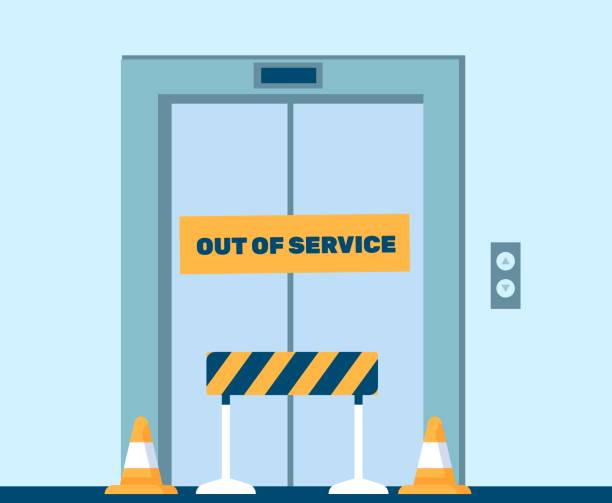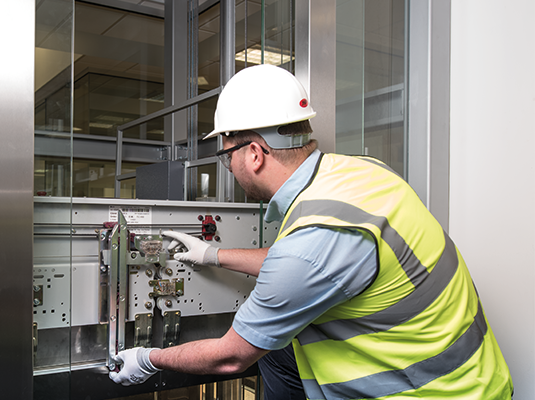Professional Tips for Ensuring Safety And Security During Comprehensive Lift Repair Service Procedures
In the realm of detailed lift repair procedures, security stands as a critical concern that necessitates careful attention to information and adherence to developed protocols. The intricate nature of dealing with lifts demands a cautious approach to safeguarding versus prospective threats and making certain the wellness of personnel entailed in repair work jobs. Amidst the complex dancing of repairing and preserving lifts, a mistake can have serious consequences, emphasizing the important need for expert pointers to navigate these procedures with utmost caution and readiness. As the intricate interaction of machinery and human treatment unravels, a critical strategy to safety and security ends up being the linchpin for successful repair work procedures.
Safety And Security Gear Demands
The safety and security gear demands for lift repair service procedures are important to guarantee the health of upkeep personnel. When working on lifts, upkeep employees must stick to rigorous safety procedures by wearing suitable gear such as difficult hats, security goggles, handwear covers, steel-toed boots, and high-visibility vests.
Tough hats are important for securing against head injuries from bumping or falling things right into above structures. Security goggles shield the eyes from debris, chemicals, or triggers that might be produced during repair. Handwear covers give hand security from cuts, burns, or electrical shocks, while steel-toed boots supply foot defense from hefty objects or devices. High-visibility vests make sure that maintenance workers are quickly seen by others, reducing the risk of mishaps because of inadequate presence. By strictly sticking to safety and security gear demands, maintenance employees can reduce threats and job successfully to maintain and fix lifts.

Tools Inspection List
To ensure the maintenance employees's safety and the appropriate functioning of lifts, a detailed devices evaluation list is vital prior to commencing any repair procedures. platform lift dimensions. This list ought to include a comprehensive evaluation of all components such as wires, sheaves, electric systems, and safety and security mechanisms. It is important to check for any kind of indications of wear and tear, rust, or damage that may endanger the lift's structural honesty or functional effectiveness
Along with mechanical elements, the evaluation list ought to include safety and security functions like emergency brakes, limitation buttons, and overload sensors. These safety devices play an essential duty in stopping accidents and guaranteeing individual protection during lift procedure.
Moreover, verifying the calibration of control systems, verifying appropriate ventilation and illumination within the lift shaft, and looking for any type of blockages or debris are essential action in the examination procedure. Normal upkeep and adherence to the equipment evaluation list not only improve safety and security protocols but likewise prolong the life-span of the lift system, reducing the chance of unanticipated failings or pricey fixings.
Hazard Recognition Methods
Making use of methodical analysis techniques, danger identification techniques are employed to identify prospective dangers within lift repair work treatments. These techniques entail a comprehensive evaluation of the fixing atmosphere, equipment, and jobs entailed to identify any hazards that could result in injuries or crashes. One common technique is the Job Security Analysis (JSA), where each step of the repair process is meticulously assessed to identify prospective threats and identify the best precaution to reduce them. In Addition, Failing Mode and Effects Analysis (FMEA) can be utilized to prepare for prospective failing points in the repair work treatment and establish preventative procedures to address them proactively.

Emergency Reaction Readiness
With a concentrate on ensuring swift and effective feedback to unforeseen circumstances, emergency situation action readiness is an important facet of preserving safety and security during lift fixing procedures. Prioritizing emergency situation preparedness involves establishing clear communication networks, designating specific duties and duties, and performing regular drills to test action times and procedures.
Secret components of emergency action preparedness include having readily accessible emergency treatment packages, fire extinguishers, and emergency situation get in touch with information prominently presented. It is vital to educate all employees associated with lift repair service procedures on emergency situation action procedures, including exactly how to securely evacuate the area in case of a fire or other emergencies.
Additionally, creating a detailed emergency situation feedback strategy details to raise repair service circumstances can aid reduce potential dangers and make certain a prompt and coordinated feedback in the event of a case. On a regular basis examining and updating this plan based upon lessons gained from previous drills or events is vital to continuously improve precaution during lift fixing treatments.
Ongoing Safety Training
Continual education and training in security methods is an essential component of making certain the continuous safety and security of workers throughout lift repair service procedures. Recurring safety and security training plays a crucial function in keeping employees educated regarding the current security standards, protocols, and ideal practices in the sector (lift servicing companies). By providing routine training sessions, employees can stay current on potential threats, safe job procedures, and emergency methods particular to lift fixing environments
Normal safety and security training also aids enhance the significance of adhering to safety and security guidelines and treatments in all times. It infuses a safety-conscious frame of mind amongst employees, advertising a culture of safety and security within the work environment. Additionally, recurring training permits employees to rejuvenate their understanding and skills, improving their preparedness to handle any type of unforeseen security obstacles that might emerge throughout lift repair procedures.
To ensure the performance of recurring safety and security training, it is important to customize the content to the specific risks and requirements connected with lift repair procedures - lift servicing companies. Employers ought to consistently examine training requirements, supply opportunities for hands-on technique, and motivate open communication pertaining to security concerns among all workers included in lift fixing operations
Final Thought
To conclude, guaranteeing safety during thorough lift repair work treatments is essential for protecting against injuries and accidents. By adhering to safety and security equipment requirements, performing equipment inspections, identifying threats, preparing for emergency situations, and offering ongoing security training, employees can decrease risks and produce a risk-free workplace. Focusing on safety measures and staying watchful throughout the repair service process will certainly aid secure both workers and the devices being serviced.
When functioning on lifts, upkeep personnel need to adhere to rigorous safety protocols by using suitable equipment such as tough hats, safety goggles, gloves, steel-toed boots, and high-visibility vests. One typical technique is the Job Security Analysis (JSA), where each step of the repair process is meticulously evaluated to determine prospective hazards and determine the ideal security actions to alleviate them.Regular education and training in safety and security protocols is a basic component of making sure the ongoing safety of personnel during lift fixing treatments.Regular safety training additionally helps reinforce the importance of adhering to safety standards and procedures at all times. By complying with safety and security gear demands, conducting equipment assessments, identifying hazards, preparing for emergency situations, and giving recurring safety training, workers can minimize threats and create a safe job atmosphere.